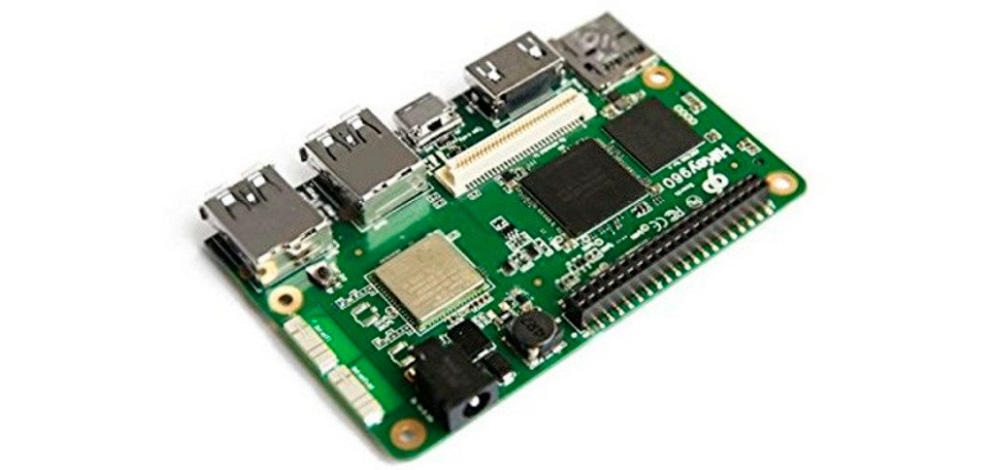Although it would not be entirely accurate, we can say that this Android super-board is a product derived from the collaboration of Huawei and Google. And we say that it would not be entirely accurate because many companies collaborated, including Google and Huawei, but also ARM, Archermind and LeMaker. As a result of this work, we can now talk about Huawei HiKey 960, a super-board (or dev-board) of $ 239 which includes new generation hardware, obviously with ARM architecture, developed to work on Android at best of its capacity.
Huawei HiKey 960 could be defined as a smartphone without a screen. Welded components on the 85 x 55 mm Printed Circuit Board (PCB) can actually be found inside a modern mobile device. The SoC Kirin 960 octa-core (quad-core ARM Cortex-A73, quad-core ARM Cortex-A53 and GPU Mali-G71 MP8), not surprisingly, it is integrated into the recent Huawei Mate 9, Huawei P10 and Honor 8 Pro. Therefore, in theory it would be possible to stream video at 4K resolution, but an HDMI 1.2a port is present on the card and only supports 1080p output. The processor is also supported by 3GB of LPDDR4 RAM and 32GB of UFS 2.1 flash memory.
Huawei HiKey 960, super-board for Android and Linux

What a super-board (or dev-board) is and what operating systems it serves, is a very good question for those not familiar with this type of device. It is a card. It can be used to build robots, drones and other smart devices, but it is primarily designed to become the centerpiece of an Android PC or a tool for developers interested in building and testing Android applications. In this sense, the launch of this new dev-board should be contextualized properly mentioning the name of Linaro, who has supported the project.
Linaro is an organization of software package developers for the Android operating system and ARM architecture. Linaro CEO George Gray made clear at the end of March the malaise of Android developers by writing the code on x86 chips and then making them compatible with the ARM architecture. This new project, therefore, serves to create a platform based on ARM architecture powerful enough to allow the writing of code without having to recompile it. It is, thus, a good solution for the current state of things.
Otherwise, wireless connectivity is provided by WiFi 802.11b/g/n/ac and Bluetooth 4.1. There is no Ethernet port, but there is microSD slot, two USB 3.0 ports and one USB Type-C port. It also includes connectors with 60 and 40 pins for the connection of external devices, such as screens and cameras. A very useful PCIe M.2 slot to add a fast SSD, in case the integrated storage is not enough. In addition, you can install Android 7.1 (there are already official instructions from Google) and in the future will also support several versions of Linux. The arrival is planned for the month of May at the price already mentioned before: $ 239.